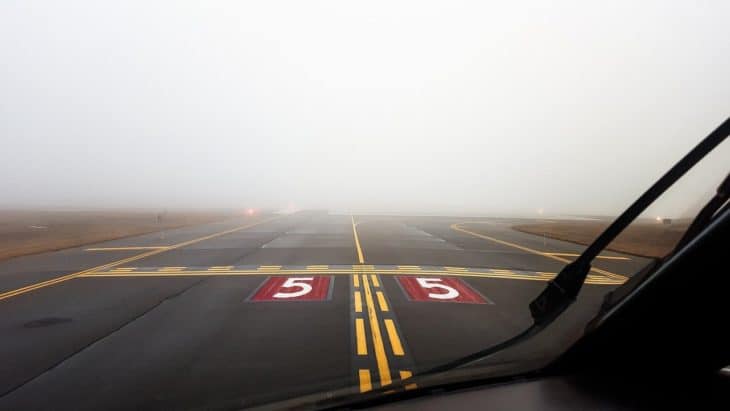Everyone knows that pilots and the aviation world in general love acronyms. This is especially true regarding weather, where international standards mean everything has an acronym or abbreviation.
Such is the case with the METAR, which stands for Meteorological Terminal Air Report. But what it stands for is less important than what it is—a simple, routine, text weather observation made by airport facilities worldwide. It is formatted the same no matter where you fly, with most airports issuing at least one report every hour.
What is a METAR in Aviation?
There are several weather reports and forecasts created specifically for the aviation community. METARs are the standardized way for the weather observer at an airport to report the weather conditions.
These reports are fed into the nation’s weather services database, and the information is then tracked for many purposes outside of aviation. Having trained observers recording data is valuable in any type of science. Many consumer apps and weather graphics get their data from observations recorded in METAR format.
For pilots, METARs represent the current conditions at an airport. They are a glimpse in time—simply the person’s observations looking out the window when making the report. They are not forecasts because they do not contain any information about the weather approaching or passing, and it does not represent the conditions anywhere but at the airport.
What is the Meaning of a METAR? Sample METAR and Decoded Text
The METAR is a specialized format that contains everything the observer needs to record. Here’s a real-world METAR and, below that, a translation into plain English. You can view both raw text and decoded METARs for any airport in the world on the NOAA Aviation Weather Center website.
METAR KPIE 061714Z 29003KT 7SM -TSRA FEW029 BKN065 OVC110 27/26 A2991 RMK A02 RAB1654 TSB03 P0007 T02720256
- METAR – Routine hourly report
- KPIE – Four-digit airport ICAO code (St. Petersburg-Clearwater International Airport, Florida, USA)
- 061714Z – Date and time (06th day of the month at 1714 Zulu[UTC])
- 29003KT – Wind direction and speed (290 degrees true at 03 knots)
- 7SM – Airport visibility in statute miles or RVR Runway Visual Range (7 statute miles)
- -TSRA – Weather phenomenon reported (thunderstorms and light rain)
- FEW029 – Clouds (few at 2,900 feet AGL)
- BNK065 – Ceilings/clouds (broken at 6,500 feet AGL)
- OVC110 – Ceilings/clouds (overcast at 11,000 feet AGL)
- 27/26 – Temperature and dewpoint in degrees Celcius (Temperature 27/Dewpoint 26)
- A2991 – Altimeter setting in inches of mercury (29.91″Hg)
- RMK – Remarks, all notes following add further detail to the report, usually for meteorological record-keeping
- A02 – Automated observation
- RAB1654 – Rain began falling at 1654 Zulu
- TSB03 – Thunderstorms began at 03 minutes after the hour (1703Z)
- P0007 – Hourly precipitation totals in 100th of an inch (00.07″ of rain fell in the last hour)
- T02720256 – Detailed temperature and dewpoint in tenths of a degree Celcius (Temperature 27.2/Dewpoint 25.6)

What is a METAR in Aviation Weather?
METARs have a special place in the aviation weather world. There are very few ways to research what’s happening in real-time at an airport without being there. So airport observations are a pilot’s best source of information on what’s actually occurring.
In weather, observations are important for several reasons. For one, they provide a reality check. Forecasts are educated guesses made by professionals, and they are pretty reliable. But there is always a certain amount of error involved. A pilot can check whether the forecaster’s prognosis is accurate by comparing a METAR with a forecast.
Secondly, looking at METARs helps weather forecasters make future forecasts more accurate. If they got it wrong today, looking back at the METARs and considering what went wrong this time will help them do a better job next time.
All good weather briefings begin with a summary of observations along the route or around the area. You can’t dive into the forecasts without getting a picture of what’s happening presently, and that’s why METARs are so important in aviation weather.
What is the Difference Between a METAR and a TAF?
If a weather briefing starts with observations, one of the next steps is the forecasted conditions. Many different forecasts are available to pilots, but one of the most interesting is usually the TAF.
The TAF is the Terminal Aerodrome Forecast. “Aerodrome” is an international word for airport—so TAFs are simply forecasts for airports. Only larger airports—usually those with commercial airline service—have TAFs.
The format of a TAF is very similar to a METAR, but a TAF is valid for specific times in the future. For example, here’s a look at the TAF from St. Petersburg-Clearwater (KPIE), issued on the 06th of the month at 1726 Zulu time for the period from the 6th at 1800Z to the 7th at 1800Z (24 hours).
KPIE 061726Z 0618/0718 31008KT P6SM VCTS SCT030CB SCT250
FM061900 31007KT P6SM SCT030 BKN250
FM070300 VRB04KT P6SM SCT250
FM071500 32007KT P6SM FEW020 SCT250
As you can see, the location, time, wind, and cloud conditions are similar to the METAR. “P6SM” means that visibility will be better than 6 statute miles. VCTS means thunderstorms in the vicinity of the airport.
How Long is a METAR Valid?
METARs aren’t valid for any set length of time because they aren’t forecasts. A METAR is the weather equivalent of looking out the window. The next time you look out the window, things will be different.

Other METAR Codes and Notes
If you have a question about a random term or symbol in a METAR, you can often find the answer by searching the web. NOAA has a list of METAR abbreviations that is helpful to print if you are trying to learn how to decode them. Another great source is the Aviation Weather Services Advisory Circular from the FAA (FAA AC00-45H).
SPECI METAR
Some METAR reports are prefaced with the code “SPECI,” or special report. This is an observation made in addition to the standard hourly reports. In other words, something special happened, and the weather observer needs to report it. In most cases, SPECI reports are made when the weather falls below basic VFR flying minimums.
NOSIG METAR
A less common marking on a METAR is NOSIG, or “no significant weather.” This may be used in place of visibility and cloud requirements and means that anything present is well above basic VFR flying requirements.
METAR $ Symbol
Sometimes you’ll see the $ symbol at the end of a METAR. This symbol means that the system should be checked for maintenance. It’s generated by automated stations (ASOS or AWOS). It doesn’t mean much to pilots, but you will often see it in the reports.
Related Posts














